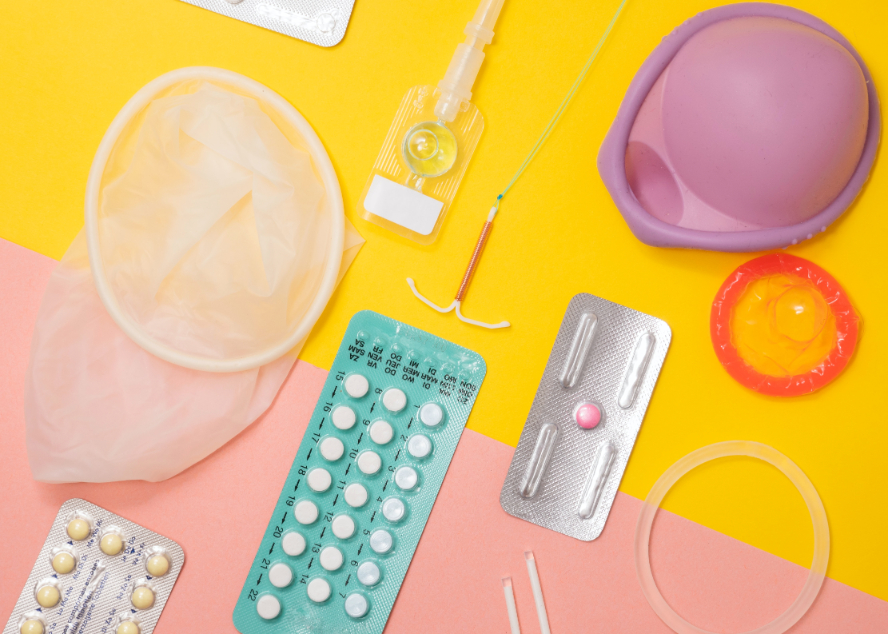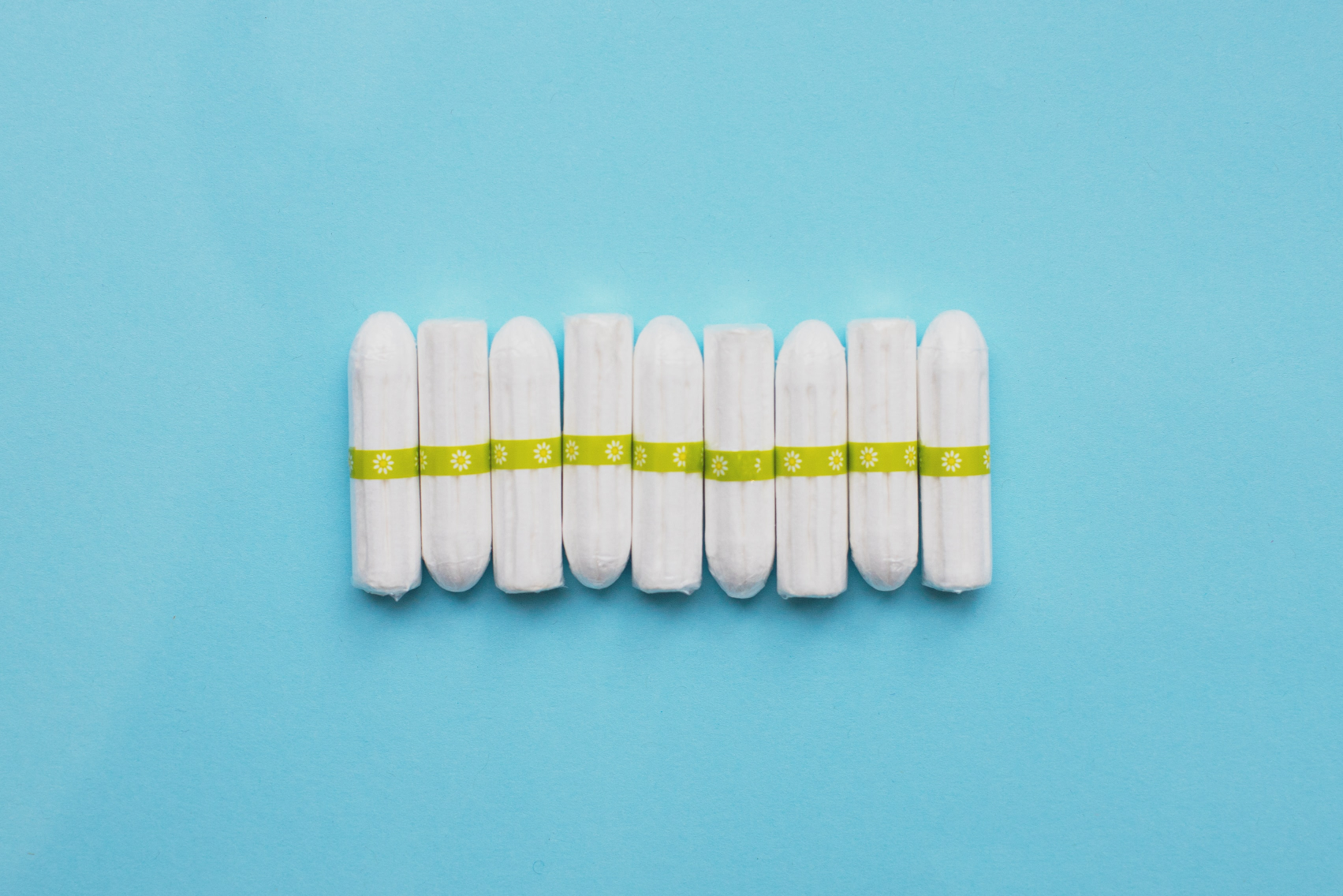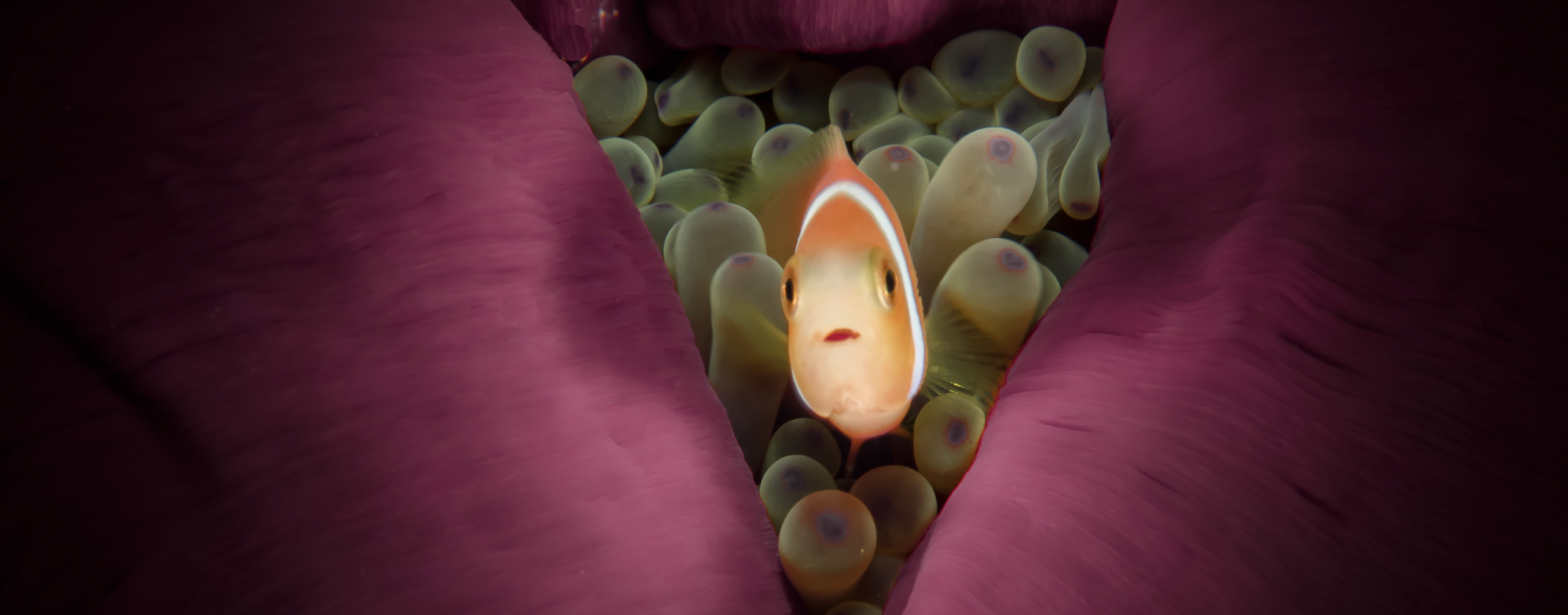

Knowledge
Your Complete Guide to Birth Control Options and Fertility
Birth Control Options: If you’ve been using birth control for a while, you may be wondering how it can impact your fertility now that you want to get pregnant. Or if you’re not looking to conceive yet, perhaps you’re searching for the contraception method that would work best for you and want to know how it can impact your fertility later on. In this guide, we give you the full breakdown of all of your contraceptive options, including potential side effects and how it affects your monthly period, and the truth on your ability to get pregnant once you stop.
Your Complete Guide to Birth Control Options and Fertility
- Does Birth Control Harm Fertility?
- How Soon Can You Get Pregnant After Stopping Birth Control?
- What Are The Different Options for Birth Control?
- What Are Long–Acting Birth Control Options?
- What Non Hormonal Birth Control Methods Are There?
- How to Prepare Your Body for Conception After Stopping Hormonal Birth Control
Does Birth Control Harm Fertility?
There are some misconceptions out there around birth control methods and fertility, so let’s clear the air, from the medical standpoint.
If you’ve been taking the pill or using another form of hormonal birth control for a while, we’ve got good news for you: There is no negative impact on your fertility once you stop. So you don’t need to worry.
To prove our point, let’s turn to some scientific research: A 2018 review of 22 research studies including a total of almost 15,000 women studied how long it took to conceive after stopping birth control (both hormonal methods and the non-hormonal IUD). They found that 83% of women got pregnant within the first 12 months. They also found that the type of progesterone in contraception and how long contraception was used do not impact fertility after stopping. And a Danish study from 2013 found that fertility may even improve with long-term use of the pill, compared with women who took it for less than two years.
How Soon Can You Get Pregnant After Stopping Birth Control?
After stopping birth control, it’s possible to get pregnant right away. It may take a few months for your body’s hormone levels to re-adjust and for your cycle to go back to the way it was before. Irregular ovulation can make it harder to plan the best time to have sex which may make getting pregnant more of a challenge. That being said, you can still get pregnant as soon as you stop using birth control.
The only exception here is with injectables: There can be a longer delay (up to one year) for fertility to return to normal after the last injection wears off. So if you want to conceive soon, this may not be the best choice for birth control.
If you’re experiencing fertility problems after stopping birth control, there’s something else causing it. With LEVY Fertility Code, you can find out why exactly you’re having trouble conceiving and get personalized recommendations for treatment.
So now, let’s get into the nitty gritty of what each method of contraception is, how it prevents pregnancy, and what you should be aware of when using it.
What Are The Different Options for Birth Control?
Birth Control Option: Pill
- How it works: Hormones in birth control pills stop ovulation and thicken the cervical mucus to block the passage of sperm. Some pills (called combination pills) have both estrogen and progestin in them, while others have progestin only (called mini pills).
- How to use: Take one pill at the same time each day.
- Effectiveness: With perfect use, the pill is 99% effective at preventing pregnancy. But some people who take the pill forget, lose the pack, or don’t get a refill in time. So with typical use, about 9 in 100 women get pregnant each year while taking the pill. Certain medicines and antibiotics can make the pill less effective, which you can read about in your pill’s leaflet.
- Potential side effects: Within the first two to three months, it’s possible to have headaches, nausea, and sore breasts as your body gets used to the hormones. But they usually go away after that. You will find any other possible side effects in your pill’s leaflet.
- Not recommended for: If you smoke, you shouldn’t take the combination pill or other forms of birth control containing estrogen. You should also avoid combination pills if you have certain health conditions, including blood clots, breast cancer, heart problems, migraine headaches with aura, uncontrolled high blood pressure, and very bad diabetes or liver disease. You shouldn’t take progestin-only pills if you’ve had certain forms of lupus or breast cancer.
- Rare health risks: Most women take the pill safely and complications are quite rare. Some rare risks can include heart attack, stroke, blood clots, and liver tumors. If you or a member of your family has had blood clots while taking the pill, it may signal a blood clotting disorder. Progestin-only pills usually don’t carry these risks.
- Impact on your period: The pill usually makes periods lighter and more regular. It can also help with PMS and ease cramps. Your period may also be early, late, or stop all together.
- Benefits: Taking the pill can help prevent acne, iron deficiency (anemia), bone thinning, cysts on the breasts or ovaries, and some cancers.
- What happens when you stop: You may have some temporary side effects as your body re-adjusts to the lack of hormones, but they should go away within a couple of months. Your period will be like it was before you started taking the pill.
- Is it safe while breastfeeding: It’s recommended to wait a couple of weeks after giving birth to start taking a combination pill because it can impact the amount and quality of your breast milk during this time,In contrast, the mini pill doesn’t impact your milk or baby while breastfeeding, and you can start taking it after your first few weeks of postpartum.
Birth Control Option: Patch
- How it works: The patch sends off estrogen and progestin through your skin, which stops ovulation and thickens the cervical mucus.
- How to use: Place a patch on your stomach, butt, or back and replace it after a specific time period. The time you’ll need to change it will vary depending on your patch. Check it daily to ensure that the patch is sticking tightly to your skin.
- Effectiveness: With perfect use, the patch is 99% effective at preventing pregnancy. But sometimes women may not put a new patch on in time, so about 9 in 100 people using the patch get pregnant per year. Some things also make it less effective, including certain medications and supplements and being overweight. If you’re in water for over 30 minutes, be sure to check that all corners are still attached to your skin.
- Potential side effects: Within the first two to three months, it’s possible to have headaches, nausea, and sore breasts as your body gets used to the hormones. You may also have some skin irritation from the patch adhesive.
- Not recommended for: If you’re over 35 and smoke, you shouldn’t use the patch. It’s also not meant for women with migraine headaches with aura, breast cancer, heart problems, very bad diabetes or liver disease, uncontrolled high blood pressure, or blood clots.
- Rare health risks: Complications are very uncommon, but you can have a slightly higher risk of heart attack, stroke, blood clots and liver tumors.
- Impact on your period: The patch can help with painful or heavy periods, as well as ease cramps and PMS. While using the patch, your period may be early or late, and you may spot within the month.
- Benefits: The patch is more convenient than the pill because it doesn’t require daily effort. It also has health benefits. The patch can help prevent acne, anemia, bone thinning, cysts on the breasts and ovaries, and certain cancers, in addition to serious infections on the ovaries, fallopian tubes, and uterus. Because the hormones are absorbed through the skin rather than taken orally, there is a lower chance of nausea and vomiting than with the pill.
- What happens when you stop: It usually takes one to two months for your periods to get back to how they were before you started the patch. Rarely, women may have irregular periods or no periods for up to six months, usually if their periods were already irregular before starting the patch.
- Is it safe while breastfeeding: You shouldn’t use the patch directly after giving birth or if you are breastfeeding.
Birth Control Option: Vaginal Ring
- How it works: A flexible plastic ring inside your vagina releases estrogen and progesterone, which suppress ovulation, thicken the cervical mucus and thin the lining of the uterus to prevent pregnancy.
- How to use: Squeeze the ring and gently slide it deep into your vagina. Keep it in place for three weeks, and then remove it. Put a new ring in one week later. Rings should be stored at room temp and away from direct sunlight.
- Effectiveness: With perfect use, the ring is 99% effective at preventing pregnancy. But sometimes women using the ring forget to take it out and put it back in at the right time. So with typical use, 9 in 100 people using the ring get pregnant per year.
- Potential side effects: Potential side effects include headaches, nausea, sore breasts, vaginal infection, depression, abdominal pain, diarrhea, and increased vaginal wetness.
- Not recommended for: The ring isn’t recommended for women over 35 who smoke, and those who are taking medication for hepatitis C or are on bed rest for an extended period of time. It also doesn’t go with certain health conditions, including diabetes with blood vessel complications, blood clots, breast, uterine or liver cancer, liver disease, heart attack or stroke, migraines with aura, uncontrolled high blood pressure, and unexplained vaginal bleeding.
- Rare health risks: There’s a slightly increased risk of blood-clotting issues, heart attack, stroke, liver cancer, gallbladder disease, and toxic shock syndrome.
- Impact on your period: Many people like the ring because it makes periods more regular, and it can help with cramps and heavy bleeding. It can also reduce PMS.
- Benefits: The ring is comfortable, you won’t feel it inside you, and it’s easier to use than having to remember to take a pill every day. It doesn’t cause weight gain, and irregular bleeding is less likely than it is with combination birth control pills. Also, there’s a smaller amount of hormones than other types of contraceptives, which can reduce the potential side effects. It also lessens or prevents acne, bone thinning, breast or ovarian cysts, ectopic pregnancy, endometrial and ovarian cancers and anemia.
- What happens when you stop: It will likely take one to two months for your periods to return to your usual cycle. Any negative side effects you felt while using the ring will go away within a few months as your body gets used to being off the hormones.
- Is it safe while breastfeeding: It’s not recommended after giving birth to start using the ring if you’re nursing your baby. This is because the estrogen in the ring can lower the amount and quality of your breast milk.
What Are Long–Acting Birth Control Options?
If you’re one of those people who find it hard to remember to take your pill at the right time every day, or might mix up the dates to change your patch or ring, not to worry. I feel you. There are lots of other options that require little to no effort on your part over a long period of time.
They are known as Long-Acting Reversible Contraception, or LARC for short. What’s nice about them is that you don’t have to do anything for a number of months or even years to prevent pregnancy. Plus, studies show that they are the most effective forms of contraception along with the combination pill, with 99% effective if used correctly. They are also free of estrogen, so they are better suited for women with certain health conditions that don’t match with the contraception methods listed above.
Birth Control Option: IUD
The IUD is a small T-shaped device that gets inserted into the uterus by a gynecologist. Your doctor may offer you some medicine to numb the pain during insertion. IUDs have been growing in popularity in recent years because of how long they last. Please note that it’s not recommended to use a menstrual cup when you’ve got an IUD because it can make it slip out of place. There are two different types: copper and hormonal IUDs.
Copper IUD
- How it works: The copper kills sperm and thickens the cervical mucus to prevent pregnancy. In case an egg does get fertilized, the IUD will stop it from implanting in the womb.
- Effectiveness: The copper IUD is over 99% effective and works for five to 10 years depending on the type.
- Potential side effects: You may have some pain and cramping while the IUD is being put in, along with cramping or back aches for up to a few days. It doesn’t carry the risk of side effects that the hormonal birth control methods have.
- Not recommended for: If you have uterine abnormalities (like large fibroids), a pelvic infection, uterine or cervical cancer, unexplained vaginal bleeding, a copper allergy, or Wilson’s disease, the copper IUD isn’t for you.
- Rare health risks: The IUD can slip out of place, which means you’re no longer protected from pregnancy. Less than one percent of women get pregnant with an IUD. If this happens, it can be very dangerous and even life-threatening. Very rarely, the IUD could push through the wall of your uterus, and you may need surgery to have it removed. It’s also possible to get an infection if bacteria enters your uterus during the IUD insertion. If it doesn’t get treated, it can lead to fertility problems in the future.
- Impact on your period: Your period can become heavier, longer, and/or more painful. If you already struggle with heavier bleeding or cramps, this may not be the right option for you.
- Benefits: The best thing about the copper IUD is you don’t have to think about it for up to 10 years. Once it’s in, it’s one and done. It can also be used as emergency contraception if inserted within five days after having unprotected sex or if your other birth control method failed.
- What happens when it’s removed: Your healthcare provider will grab the IUD’s strings and gently pull it out. You may have some light bleeding and cramping during the removal. Your periods will soon return to how they were before you had the IUD.
- Is it safe while breastfeeding: The copper IUD can be used safely while breastfeeding. Most healthcare providers advise waiting six or eight weeks postpartum.
Hormonal IUD
- How it works: The IUD releases progesterone which thins the uterine lining and thickens the cervical mucus so that sperm can’t reach an egg.
- Effectiveness: The hormonal IUD is over 99% effective and works for three or five years depending on which type you get.
- Potential side effects: Like with the copper IUD, you can have some cramping or soreness during and right after the insertion. You may also get headaches, acne, breast tenderness, cramping or pelvic pain, irregular bleeding in the first six months, or cysts on your ovaries. Most ovarian cysts are harmless and don’t cause discomfort, but if they rupture they can cause sudden extreme pain in your abdomen or pelvic area, fever, or vomiting and should be treated right away.
- Not recommended for: If you have breast malignancy or liver tumors and disease, the hormonal IUD isn’t best for you.
- Rare health risks: Like the copper IUD, the hormonal can slip out of place, which means you’re no longer protected from pregnancy. Less than one percent of women get pregnant with an IUD. If this happens, it can be very dangerous and even life-threatening. Very rarely, the IUD could push through the wall of your uterus, and you may need surgery to have it removed. It’s also possible to get an infection if bacteria enters your uterus during the IUD insertion. If it doesn’t get treated, it can lead to fertility problems in the future.
- Impact on your period: Periods normally become lighter, shorter, and less painful. They may even stop completely.
- Benefits: Besides the positive impacts on your period, the nice thing about the IUD is that you don’t have to think about it or do anything for up to five years once it’s in.
- What happens when it’s removed: Your healthcare provider will grab the IUD’s strings and gently pull it out. You may have some light bleeding and cramping during the removal. Your periods will soon return to how they were before you had the IUD.
- Is it safe while breastfeeding: The hormonal IUD can be used safely while breastfeeding. Most healthcare providers recommend waiting six or eight weeks postpartum.
Birth Control Option: Hormonal Implant
- How it works: The hormonal implant is a four centimeter plastic rod that gets placed into the outer layer of skin on your upper arm by a healthcare provider. They will numb your arm for the insertion so you don’t feel any pain. It releases progestrogen which stops ovulation, thins the uterine lining, and thickens cervical mucus to prevent pregnancy.
- Effectiveness: The implant is over 99% effective. If you use certain medications or herbal products or have a BMI over 30, it may not work as well. It prevents pregnancy for three years.
- Potential side effects: You can have some soreness, bruising, or swelling where the implant gets put in, but it’ll go away quickly. After insertion, potential side effects include irregular bleeding, weight gain, mood changes, acne, and headaches.
- Not recommended for: Women with breast cancer, liver disease, heart disease, or abnormal bleeding shouldn’t get the implant.
- Rare health risks: Rarely, the skin around the implant can get infected.
- Impact on your period: With the implant, your periods may become irregular, longer, or stop completely. The implant can help reduce heavy bleeding and period pain.
- Benefits: The implant is convenient because you don’t have to do anything for three years and you’re still protected from pregnancy. It can also improve periods which is a plus.
- What happens when it’s removed: To take out the implant, a healthcare provider will numb your arm, make a small cut, and gently remove it. You may have some tenderness, swelling or bruising. Any side effects you felt while the implant was in should go away once it’s removed.
- Is it safe while breastfeeding: You can have the implant fitted postpartum and it’s safe to use while breastfeeding.
Birth Control Option: Injections
- How it works: A provider injects a solution that releases the hormone progestogen to stop ovulation, thicken cervical mucus, and thin the uterine lining to prevent pregnancy.
- Effectiveness: When used perfectly, meaning you always get a new injection in time, it’s over 99% effective at preventing pregnancy. But in reality, sometimes people get them late, and about 6 in 100 people using this method get pregnant each year. Depending on the type of injection, you’ll need to get a new one every eight or 13 weeks. The effectiveness isn’t lessened by other medications.
- Potential side effects: With the injection, you may have headaches, acne, hair loss, weight gain, or mood changes. You may feel side effects as long as the injections are working and for some time after the last injection.
- Not recommended for: For people with a history of depression, heart attack, stroke, breast cancer, or liver disease, injections may not be recommended.
- Rare health risks: Very rarely, some people may have an allergic reaction to the injections. It may also cause bone thinning, but that’s usually not an issue because bones grow back after you stop the injections. But for this reason, some doctors may recommend stopping injections after two years to avoid long-term impact on your bones.
- Impact on your period: Your periods may become irregular, heavier, lighter, shorter, or stop. Injections can also decrease menstrual pain.
- Benefits: This form of contraception can lower the risk of endometrial cancer. It’s also used as a treatment for anemia, seizures, endometriosis, and uterine fibroids.
- What happens when you stop: You keep feeling some side effects for a little while even after the last injection wears off.
- Is it safe while breastfeeding: It’s not the method of the first choice, but it’s safe to get injections while breastfeeding.
Wrap-Up
It’s totally okay to try out a few different types of contraception (including different pills) to find the one that works best for you. Each woman’s body is different and everyone may respond differently to hormones in birth control. And keep in mind that none of these methods of contraception protects you from sexually transmitted infections (STIs). STIs can have a big impact on fertility, so to protect your health and future fertility, it’s recommended to use a condom as well.
What Non Hormonal Birth Control Methods Are There?
If you’re interested in non-hormonal contraception, there are plenty of options too. Besides the copper IUD, you have barrier methods, including:
- Condoms
- Sponges
- Cervical caps
- Spermicide
There’s no impact on male nor female fertility in the future when using any of these methods.
There’s also what’s known as the “natural family planning” method, where you track your cycle and ovulation by measuring your basal body temperature and cervical mucus. To use this method effectively, you need to be really in tune with your body, but it can prevent pregnancy up to 99% of the time.
How to Prepare Your Body for Conception After Stopping Hormonal Birth Control
You can get pregnant pretty much immediately after stopping hormonal birth control, with the exception of the injections. But there are a few things you can do to balance your hormonal levels and prep your body for conception and healthy pregnancy:
Eat healthy meals with plenty of fresh fruits and veggies (check out our article on fertility foods to learn which foods are scientifically proven to impact fertility)
- Get enough Zzz’s (aim for 7-9 hours each night)
- Replenish your vitamins and nutrient levels (some get diminished with birth control)
- Vitamins B2, B6, B12
- Vitamin C
- Vitamin E
- Folate (a vital nutrient during conception and the first weeks of pregnancy, for more on that read our factsheet)
- Magnesium
- Selenium
- Zinc (also important for fertility)
- Get your blood glucose levels and insulin resistance tested (research shows that hormonal birth control can cause changes)
If you’ve been off birth control and trying to conceive for over six months, use LEVY Fertility Code to learn why you’re not getting pregnant. You’ll get individualized blood diagnostics and treatment recommendations from our fertility experts to help you on your fertility journey.
Sources:
Girum T et al.: Return of fertility after discontinuation of contraception: a systematic review and meta-analysis. Contracept Reprod Med. 2018;3:9.
Yland JL et al: Pregravid contraceptive use and fecundability: prospective cohort study. BMJ. 2020;371.
Your guide to long-acting reversible contraception (LARC). NHS. Accessed 02 February 2022.
Birth Control Pill. Planned Parenthood. Accessed 02 February 2022.
Vaginal ring. Mayo Clinic. Accessed 02 February 2022.
Birth Control Patch. Planned Parenthood. Accessed 02 February 2022.
Mikkelsen EM et al: Pre-gravid oral contraceptive use and time to pregnancy: a Danish prospective cohort study. Human Reproduction. 2013;28(5):1398-1405.
Birth Control Ring. Planned Parenthood. Accessed 03 February 2022.
Copper IUD (ParaGard). Mayo Clinic. Accessed 03 February 2022.
Ovarian cysts. Mayo Clinic. Accessed 03 February 2022.
The contraceptive injection. NHS. Accessed 04 February 2022.
Contraceptive implant. NHS. Accessed 04 February 2022.
Birth Control Implant. Planned Parenthood. Accessed 04 February 2022.
IUD. Planned Parenthood. Accessed 04 February 2022.
Plamery M et al.: Oral contraceptives and changes in nutritional requirements. Eur Rev Med Pharmacol Sci. 2013;17(13):1804-13.
Winner B et al.: Effectiveness of Long-Acting Reversible Contraception. N Enl J Med, 2012;366:1998-2007.
What are contraceptive transdermal patches? Medscape. Accessed 16 February 2022.
You might also like...

Female hormones: What you need to know about reproductive hormones, the menstrual cycle, and fertility
When you’re struggling with fertility, one of the first places to look is your hormones. Certain vital reproductive hormones are in charge...
Silvia Hecher
January 17, 2024

Fertility blood test: Why does it need to be cycle days 2-5?
When you test your fertility with LEVY, you will always check your basic reproductive hormone levels (including FSH, LH, TSH, Prolactin, Estradiol,...
Lena
September 8, 2022

Forms of amenorrhea and fertility
Not getting your period is a condition called amenorrhea. It’s important for fertility because not having a menstrual cycle with monthly ovulation...
Lena
January 18, 2022

6 Interesting Facts About Ovaries You Might Not Know
Women have two ovaries which are located on either side of the uterus. They’re around 3-5 cm long – about the size...
Kayla
April 20, 2022

What to expect when testing your fertility with LEVY
If you’ve been trying to conceive for a while, it’s totally normal to feel frustrated. Why hasn’t it happened for you yet,...
Kayla
February 3, 2022

Your Complete Guide to Birth Control Options and Fertility
If you’ve been using birth control for a while, you may be wondering how it can impact your fertility now that you...
Kayla
February 21, 2022

Fertility Foods for Women to Help You Get Pregnant Faster
How you nourish your body is key not only when you have a baby in your belly, but also to help prepare...
Kayla
March 22, 2022

What your AMH levels can tell you about fertility
FSH, LH, estrogen, progesterone… If you’re struggling to have a baby, you’re probably becoming an expert on all things hormones. AMH is...
Lena
August 25, 2022

Why Vitamin D matters for fertility
Vitamin D is a very important nutrient to keep our bodies healthy and working as they should. But did you know that...
Kayla
January 18, 2022




